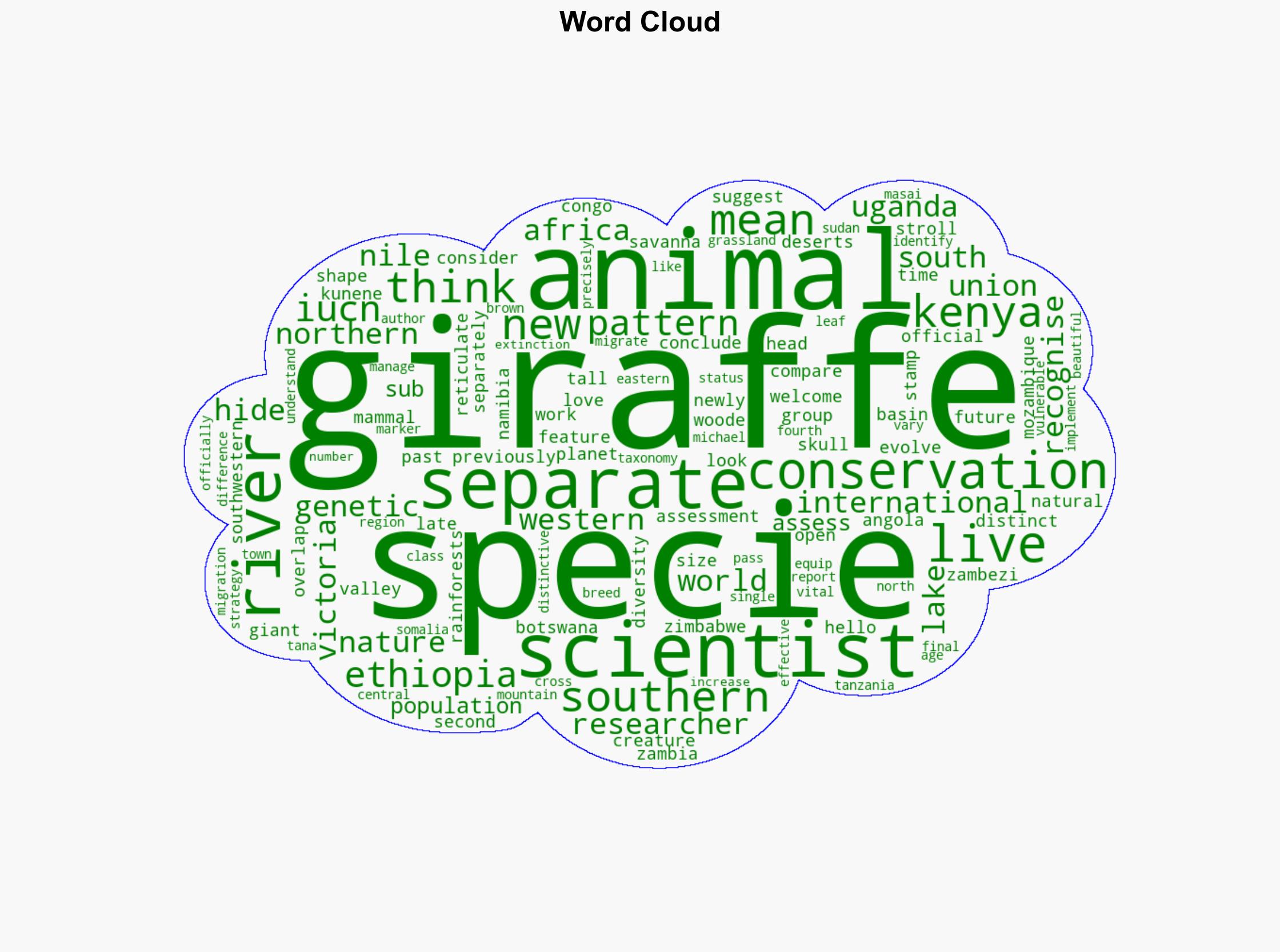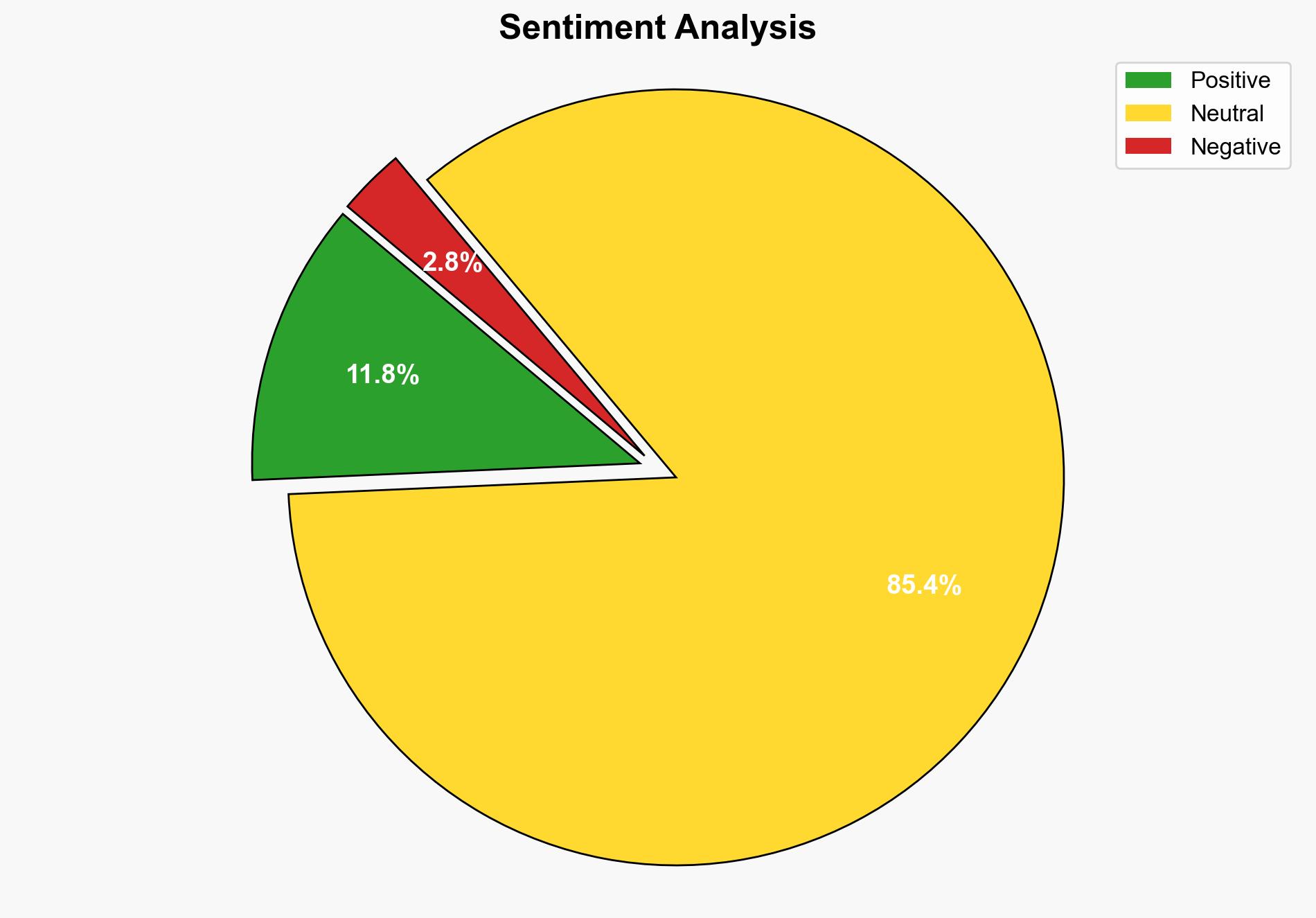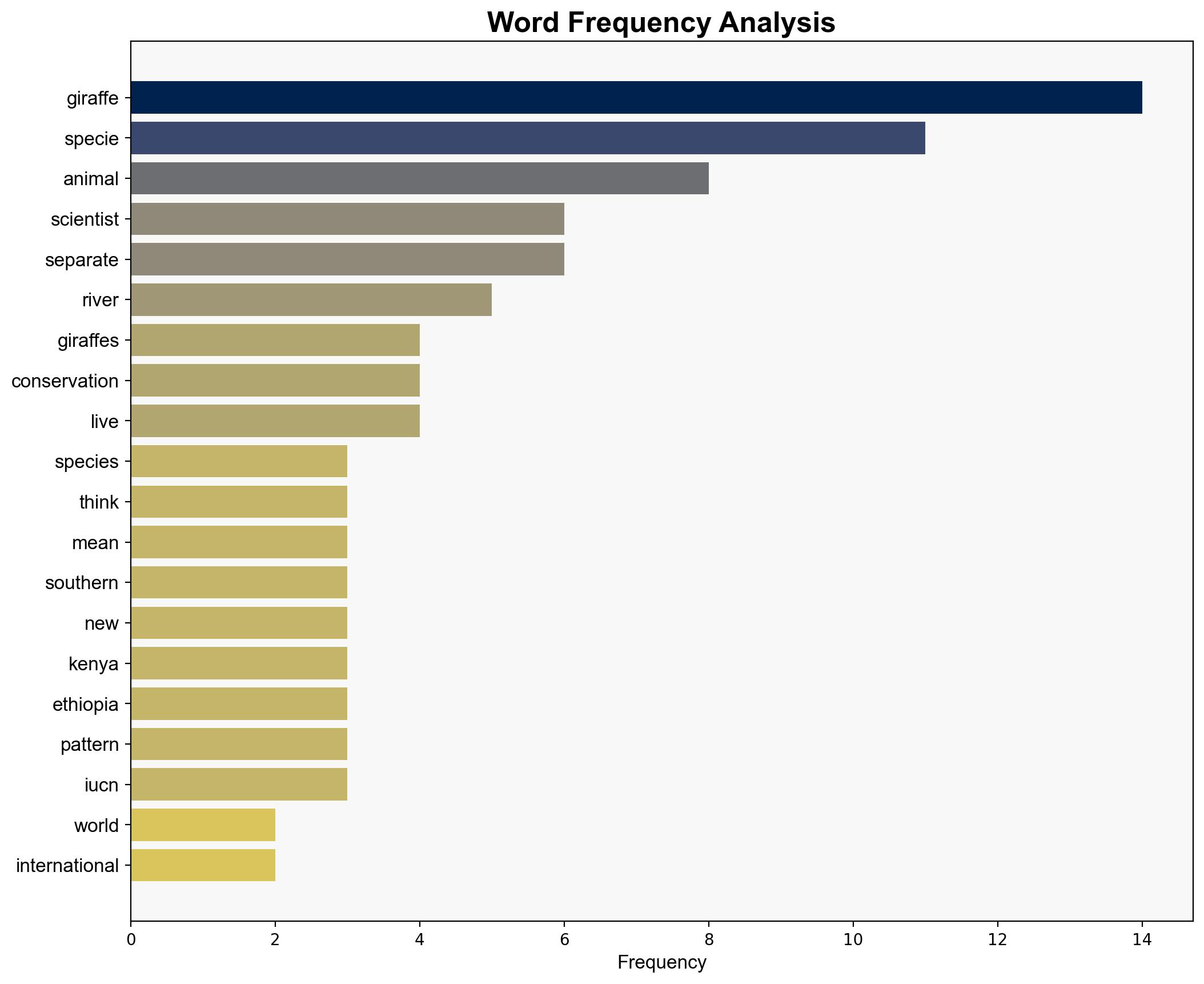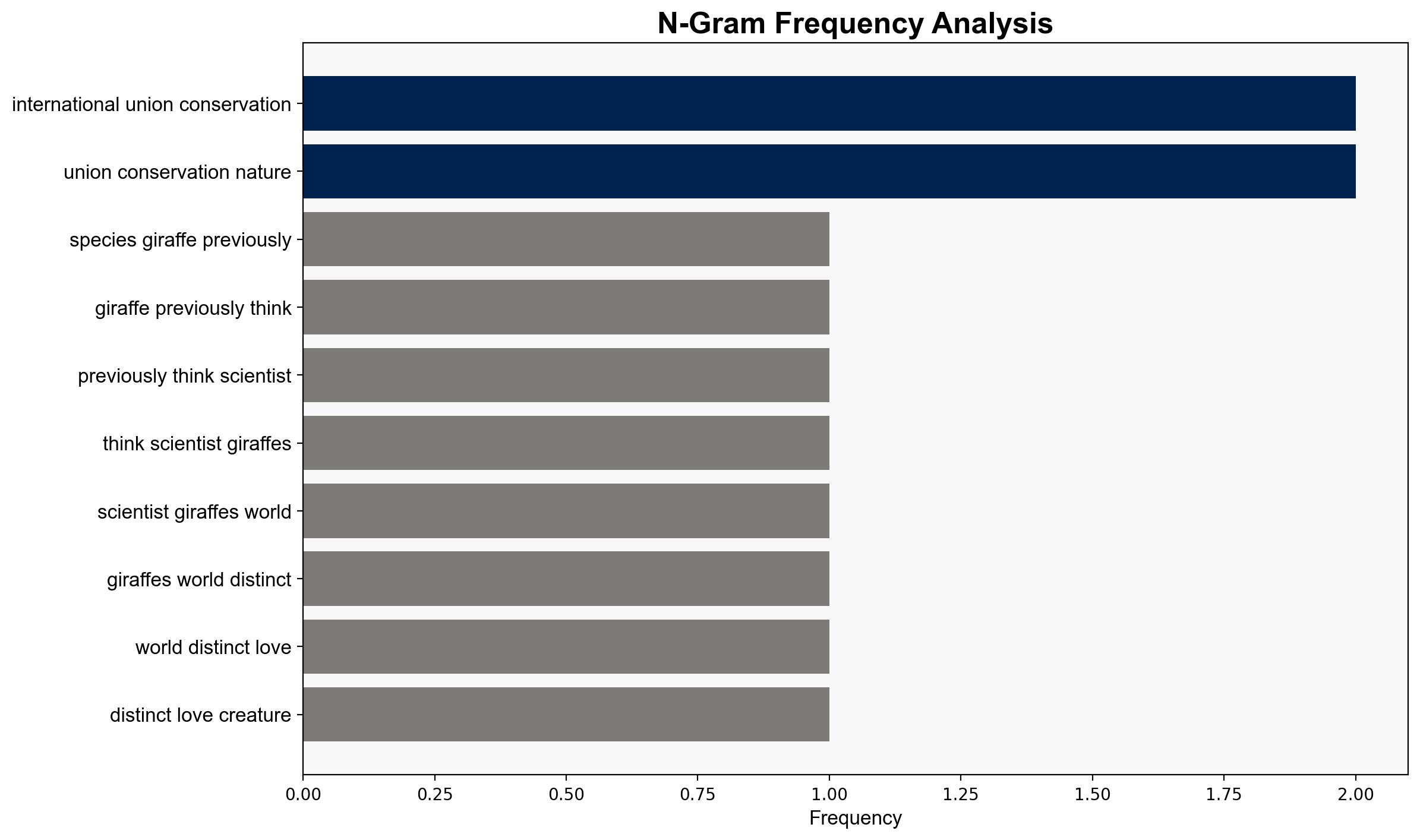Three more species of giraffe than previously thought – can you spot the difference – BBC News
Published on: 2025-08-21
Intelligence Report: Three more species of giraffe than previously thought – can you spot the difference – BBC News
1. BLUF (Bottom Line Up Front)
The recent identification of three additional giraffe species, previously considered a single species, has significant implications for conservation strategies and biodiversity management. The most supported hypothesis suggests that recognizing these distinct species will enhance targeted conservation efforts, potentially improving the survival prospects of giraffes. Confidence in this hypothesis is moderate due to the need for further genetic and ecological studies. Recommended action includes revising conservation policies to reflect these findings and prioritizing habitat protection.
2. Competing Hypotheses
Hypothesis 1: The identification of new giraffe species will lead to more effective conservation strategies, as it allows for tailored approaches that consider the unique ecological needs and genetic diversity of each species.
Hypothesis 2: The reclassification of giraffes into multiple species may complicate conservation efforts by fragmenting resources and focus, potentially leading to inefficiencies and reduced overall effectiveness.
Using the Analysis of Competing Hypotheses (ACH) 2.0, Hypothesis 1 is better supported due to the emphasis on genetic diversity and ecological specificity, which are critical for effective conservation.
3. Key Assumptions and Red Flags
Assumptions include the belief that genetic diversity directly correlates with conservation success and that current data accurately reflects giraffe population distributions. A red flag is the potential for misinterpretation of genetic data, which could lead to incorrect species classification. Additionally, there is a risk of cognitive bias towards favoring novel scientific findings without sufficient corroboration.
4. Implications and Strategic Risks
The reclassification could lead to increased funding and attention for giraffe conservation, but it also risks diverting resources from other critical conservation efforts. There is a potential for geopolitical tension if conservation efforts impact land use or economic activities in regions where the newly identified species reside. The psychological impact on public perception of conservation priorities may also shift, influencing policy and funding.
5. Recommendations and Outlook
- Revise conservation strategies to incorporate the new species classifications, ensuring that each species’ unique needs are addressed.
- Conduct further genetic and ecological research to confirm species distinctions and inform conservation priorities.
- Engage with local communities and governments to align conservation efforts with regional development goals.
- Scenario-based projections:
- Best Case: Enhanced conservation efforts lead to increased giraffe populations and biodiversity.
- Worst Case: Fragmented conservation efforts result in resource misallocation and declining giraffe populations.
- Most Likely: Gradual improvement in conservation outcomes as strategies are refined and implemented.
6. Key Individuals and Entities
Michael Brown (author of the report), International Union for Conservation of Nature (IUCN).
7. Thematic Tags
biodiversity, conservation strategy, ecological management, genetic research





